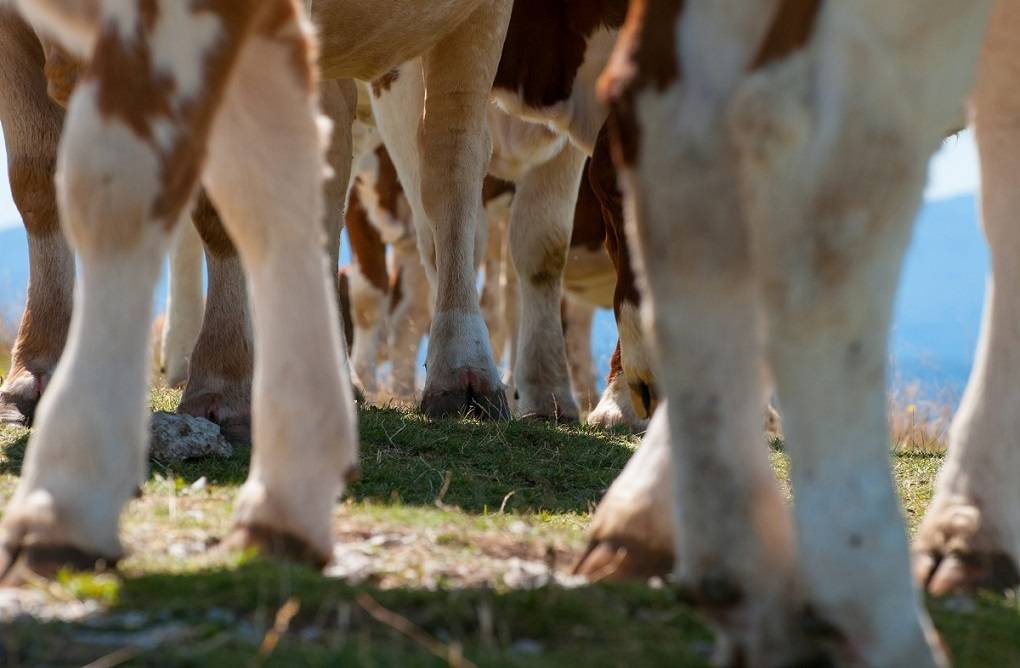
Blackleg is a disease caused by Clostridium chauvoei and primarily affects cattle under two years of age and is usually seen in the better-doing calves. This disease is a preventable, soilborne disease of both cattle and sheep that producers need to be concerned about. Blackleg vaccines are widely available and are very effective at preventing livestock from contracting this deadly disease. This disease is a non-contagious but highly fatal disease.
Symptoms of Blackleg
There are varied signs and symptoms of blackleg. However, the disease progresses so rapidly that in many cases calves can quickly become ill and die before symptoms have become apparent. Here are some common symptoms-
-
Cattle affected by blackleg will exhibit a fever.
-
It is common for cattle to develop lameness in an affected leg.
-
The affected muscles tend to swell and may be hot to the touch.
-
Affected cattle can lose their appetite.
-
Cattle can also become lethargic or depressed when they are actively affected by blackleg infection.
-
Sometimes, affected cattle may want to lie down and are unable to get up.
Cause of Blackleg
Most cases of blackleg are caused by the anaerobic, spore-forming bacteria, Clostridium chauvoei. Clostridium bacteria have developed the ability to survive extreme environmental conditions by developing into highly resistant spores. As spores, the bacterium can live in soil for many years, waiting for its opportunity to strike and infect a host. A number of factors increase the likelihood that cattle will contract the blackleg disease-
Improper carcass disposal- Proper carcass disposal is vital for preventing the spread of the disease. The best practices for proper carcass disposal include burning the carcasses or burying them deeply where they have fallen. Dragging the carcasses over the ground can lead to spore dispersal. Burning the top area of soil where afflicted animals have died is often necessary as well.
Flooding- Floodwater carry soil and spores over vast areas of ground. Rains and flooding make the earth soft, so cattle can easily dig into it with their hooves and horns, thus increasing their likelihood of coming into contact with the spores. If pastureland is flooding, consider moving feeding stations to higher ground or concrete pads to minimize the likelihood your cattle will ingest blackleg spores.
Drought- During drought forage growth is stunted. This causes the cattle to feed on the shorter vegetation, which causes their mouth to come closer to the soil, and their risk of contracting blackleg from soil contact increases.
Injury- Reduced oxygen at the injury site is a breeding ground for blackleg spores. Activities such as transport, improper handling, injections, excessive exercise, and rough pasture interactions can all cause bruising that may lead to blackleg spore germination and active infection.
Prevention of Blackleg Disease in Cows
-
Vaccines are available to prevent blackleg disease. Calves 2 months old should be vaccinated twice, 4 weeks apart, which is followed by an annual booster before it starts to become hotter. Naïve ewes should be vaccinated twice, with the second dose 1 month before lambing and then with yearly boosters.
-
During a blackleg outbreak, all susceptible cattle should be vaccinated and treated with the administration of prophylactic penicillin to prevent new cases. Cattle should be moved from affected pastures.
-
Deceased animals should be dealt with immediately. They should not be dragged across the ground as they can pass the disease. Pick the animal and carry them out of the pasture, burn them completely, or cover them with quick lime and bury them deeply. Predators, scavengers, and normal rainfall cannot reintroduce the carcass and its spores to your herd.















